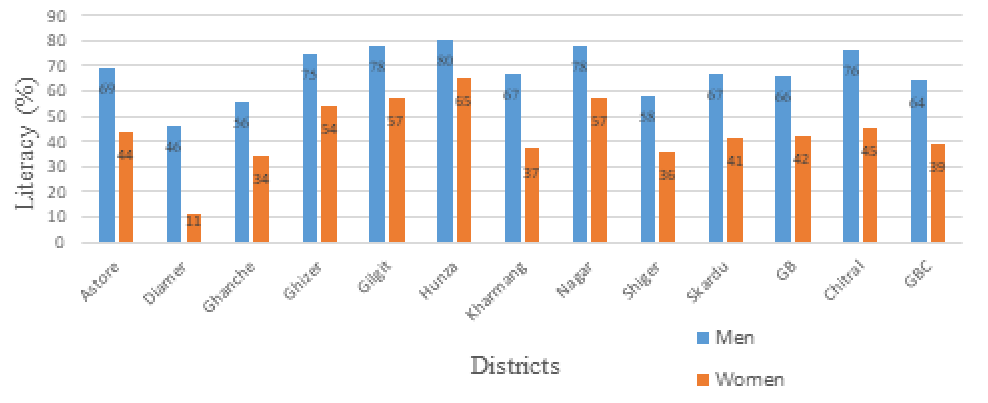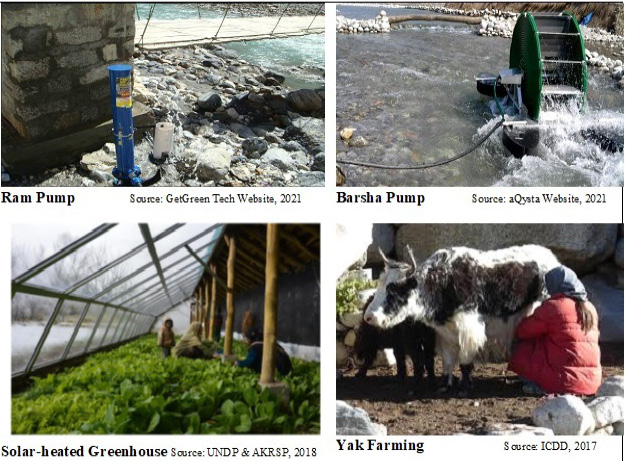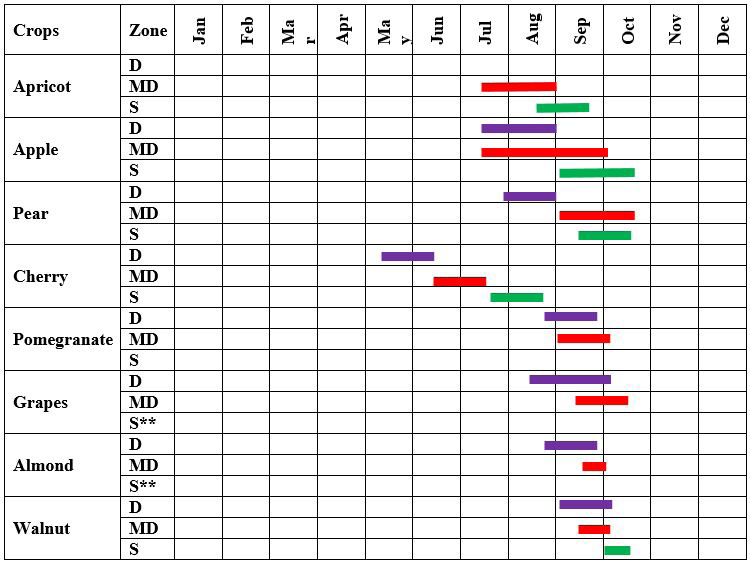Developing Evidence Based Policy and Programmes in Mountainous Specific Agriculture in Gilgit-Baltistan and Chitral Regions of Pakistan
Abid Hussain1*, Saifullah Khan2, Shamas Liaqat3 and Shafiullah4
1Social Sciences Research Institute, PARC-NARC, Islamabad, Pakistan; 2University of Agriculture, Peshawar, Khyber Pakhtunkhwa, Pakistan; 3University of Agriculture, Faisalabad, Pakistan; 4Agribusiness Support Fund, Gilgit, Khyber Pakhtunkhwa, Pakistan.
*Correspondence | Abid Hussain, Social Sciences Research Institute, PARC-NARC, Islamabad, Pakistan; Email: abid.parc@gmail.com
Figure 1:
Literacy levels in Gilgit Baltistan and Chitral regions.
Table 3:
Sowing and harvesting schedule for major vegetable crops.
Source: GoGB, 2017. D: Double cropping Zone; MD: Marginal Double Cropping Zone; S: Single Cropping Zone. *Not grown in the zone ** Climate is not fit for production.
Figure 2:
Promising Innovative and Traditional Technologies.
Table 4:
Harvest Calendar for major fruit crops.
Source: GoGB, 2017. D: Double cropping Zone; MD: Marginal Double Cropping Zone; S: Single Cropping Zone. * Climate is not fit for production.











